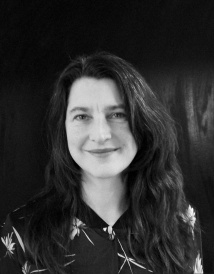Religious texts as a resource in a colonial context
Interview with historian PD Dr. Felicity Jensz concerning the “Global Bible” (GloBil) project

The international project “Global Bible” (GloBil) aims to analyze British and German contributions to the attempt to translate the Bible into all the languages of the world. The project is a collaboration between researchers from the University of Münster and the University of Bristol (UK). The research focuses on Bible translations from three regions: the Arctic, Oceania and Australia, and West Africa. GloBil traces the global Bible movement in these three regions and seeks to uncover the contribution made by indigenous translators and evangelists, as well as by British and German Bible societies. The project is anchored primarily in traditional historical research. In addition, one of the aims of the project is to publish a database created using digital humanities methods and based on FAIR principles, i.e. it is findable, accessible, interoperable, and permanently reusable. This database and the visuals that result from it will be used to generate and address further scholarly questions.
What is the topic of your DH project in the Cluster of Excellence, and what question does it address using DH methods?
Tthe GloBil project explors the archives of German and British Bible societies with the aim of uncovering the history of the global Bible movement and its engagement with non-Western languages. Much of today’s knowledge about these languages is based on the arduous and often decades-long work undertaken by indigenous translators and missionary linguists from the colonial era. However, this important information is still largely hidden in religious archives.
At the beginning of the 20th century, part of the Bible had been translated into around 1,000 languages, including many that had not previously known a written language. These 1,000 or so languages in which the whole or parts of the Bible were published are listed in the “Book of a Thousand Tongues”. While containing a wealth of information, the book is difficult to use when it comes to answering complex questions. However, we want to access the information and are interested in the complex patterns within the data. Which is why we are converting these data into a data model. To do so, we are using DH methods such as data modelling (relational or linked data). As a member of the Cluster of Excellence, I am benefitting greatly from the DH knowledge there.
What do the DH methods actually look like when you apply them in your project?
To be able to apply the DH methods, we have to spend lots of time preparing the data in advance. Although the entire “Book of a Thousand Tongues” is already available as a scan, the sections that were relevant to us to be manually segmented according to language. Then this data can be converted, for example using a software tool such as “OCR4all”, which converts the segments into machine-readable text. Data such as date, location, person and language can be found in these segments. A data model was developed in parallel. This model transforms and stores the selected information from the segments, from which new questions can be developed and dealt with using the data model.
How are or were these methods developed: in whole or in part for your project?
The DH part of the project will be carried out using tried and tested tools. What is special about the project will be the data model.
What results are already available, and what results do you expect? What would the same research look like without DH methods?
The initial results from the archive work show that the relationships between British and German Bible societies were very complex and also shaped by, for example, economic factors. We have also been able to reinterpret the contribution made by some West African “assistants” in translating the Bible, and to show for the first time that they had much more influence than has previously been acknowledged. Results for the DH part are still pending, but we are making good progress. Without DH, the project would not be able to analyze the information from the “Book of a Thousand Tongues” in depth. We are looking for relationships between the datasets, which is where the methods of digital humanities come in. As the data model allows us to expand the database, so we will be able to add more data beyond the “base” book. The DH tools make indexing the content much faster than could manual indexing. Without DH, there would be no computerized searchability and analysis of indexed content.
What is the social relevance of this research today? What value do the DH methods have in this regard?
The legacy of the Bible translations can still be felt today in Africa, Asia, Australasia, and the Arctic. The question of who published which version of the Bible translation, for whom and by what means, touches on both power relations and networks in the colonial period. Much of the history of Bible translations and the Bible societies that made these translations possible has been forgotten today. The GloBil project highlights the contribution made by the indigenous translators and evangelists who were involved in the translations. The DH aspect of the project will enable us to share our findings through the data model and database, to visualize the material, and to help researchers from around the world to pose their own questions regarding the data that we have collected – thereby stimulating research beyond the period of our funding. (exc/pie/tec)

